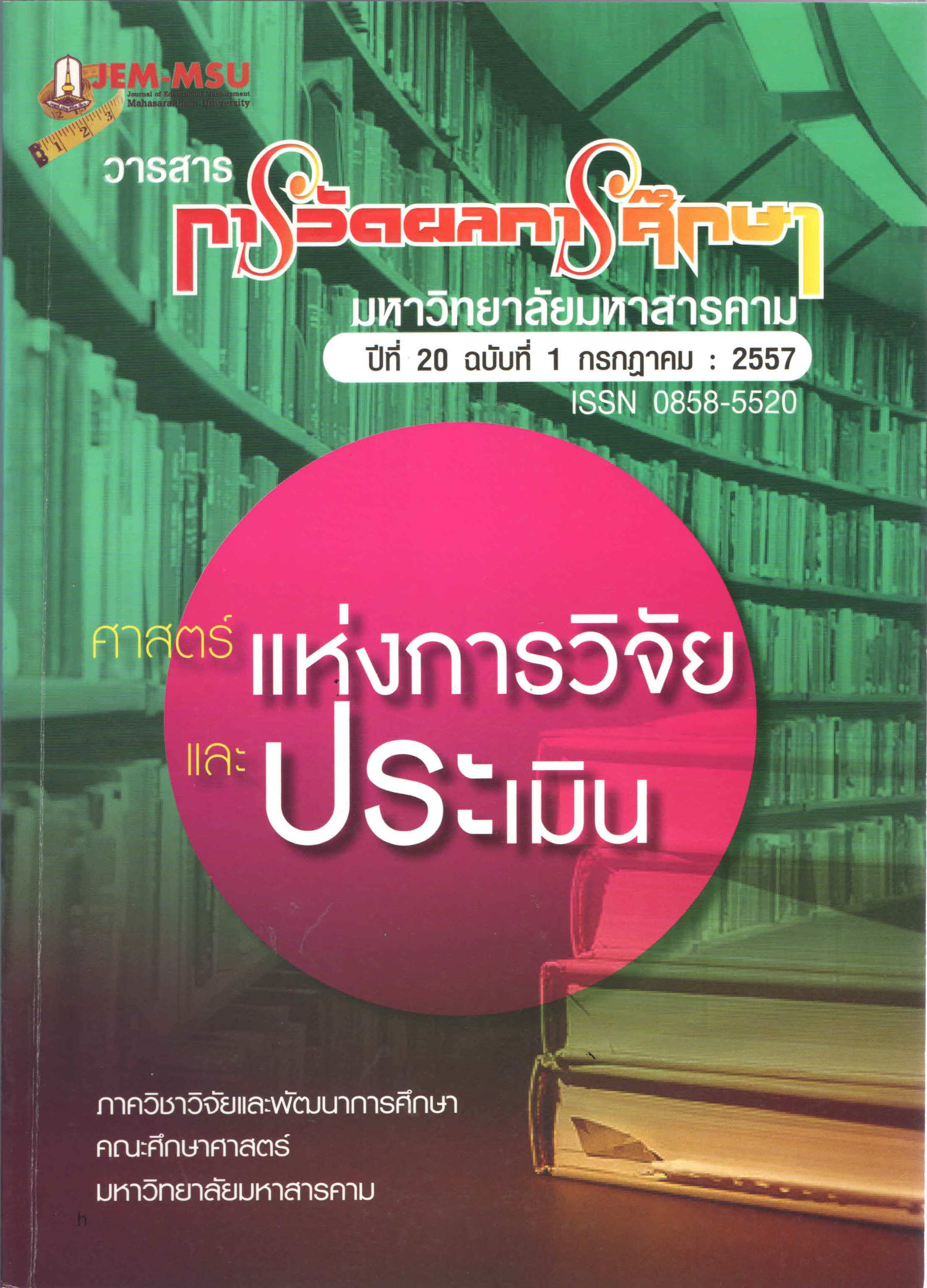A Construction of learning Readiness Scales for students Kindergarten to Year 2. Under the Office of Nakhonratchasima Primary Education Service Area Zone 7
Main Article Content
Abstract
Education provision at the preprimary education level aims for children to
have appropriate developments at their age according to their abilities and
individual differences in physical, emotional–mental, social, and intellectual
aspects to be basics of living happily in the society, and to have readiness for
learning at future higher levels. This research aimed to develop readiness for
learning For Kindergarten students to Year 2, to assess the quality of learning. For
Kindergarten students to Year 2, and the norm.The sample used in the research
consisted of 400 Kindergarten 2 students from 24 school under the Office of
Nakhonratchasima Educational Service Area Zone 7 in the second semester of the
academic year of 2012. The participants were selected using the multi stage
random sampling. The instruments used in the research were of two types. For
readiness for intelligence of item 3 – choice from the picture test, 2 tests were
used: test 1 to measure thinking competency, test 2 to measure language
competency and observation form on readiness of scale (Rating Scale) 3 level,3
tests, were used: test 3 to individual differences in physical, test 4 to emotional–
mental and test 5 to social. The test was tested three times. The first test,
administered to 100 subjects to determine the item difficulty power and item
discrimination power. The second test, the test was administered to 100 subjects
to determine the difficulty and item discrimination powers. And the third test, 200
people samples were tested to determine the difficulty, item discrimination
powers of the whole test, and the total reliability, T-score, and expansion of
normal criteria through apredictive equation were calculated. The collected data
were analyzed using percentage, mean, standard deviation, and t – test
(independent samples) was employed for testing hypotheses.
The results of the study are as follows:
1. The readiness for learning, 5 tests for 85 items
Test 1 to measure thinking competency for 20 items, test 2 to
measure language competency for 20 items ,test 3 to individual differences in
physical for 15 items, test 4 to emotional–mental for 15 items and test 5 to social
for 15 items.
2. Evaluating the quality of the readiness for learning, 5 tests
The content validity was examined by 5 experts to mean of the
tests created which ranged from .60 –1.00 for every test.
Test 1 to measure thinking competency with difficulties ranging
.33 – .80, discriminating powers ranging .24 – .50, mean 15.03, standard deviation
2.42, Standard Error of Measurement 1.23 and a reliability of .74. The reliability of
the raw scores from 7 to19 points and that is normal ranged from T22 to T72
Test 2 to measure language competency with difficulties ranging
.42–.80, discriminating powers ranging .20–.54,mean13.96, standard deviation 2.59,
Standard Error of Measurement 1.10 and a reliability of.82.The reliability of the raw
scores from 7 to 19 points and that is normal ranged from T24 to T66
Test 3 to individual differences in physical with mean 2.85,
standard deviation .36, and a reliability of.94.
Test 4 to emotional–mental with mean 2.82, standard deviation
.39,and a reliability of.82.
Test 5 to social with mean 2.71, standard deviation .46, and a
reliability of .86.
The readiness for learning through quality inspection is necessary for this
research. The value of Difficulty, Discriminatory Power and Accuracy can be used
to properly assess learning for students in kindergarten to Year 2.
Article Details
The content and information contained in the published article in the Journal of Educational Measurement Mahasarakham University represent the opinions and responsibilities of the authors directly. The editorial board of the journal is not necessarily in agreement with or responsible for any of the content.
The articles, data, content, images, etc. that have been published in the Journal of Educational Measurement Mahasarakham University are copyrighted by the journal. If any individual or organization wishes to reproduce or perform any actions involving the entirety or any part of the content, they must obtain written permission from the Journal of Educational Measurement Mahasarakham University.


